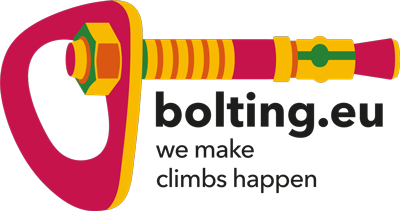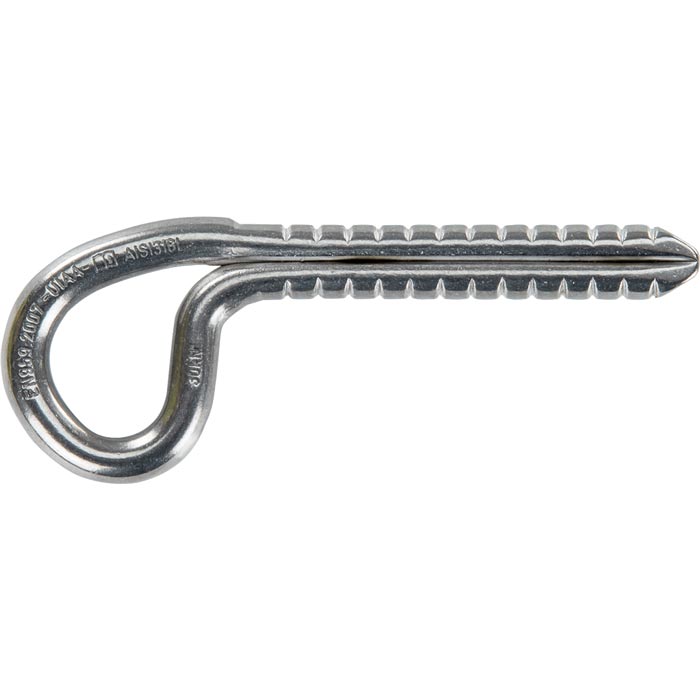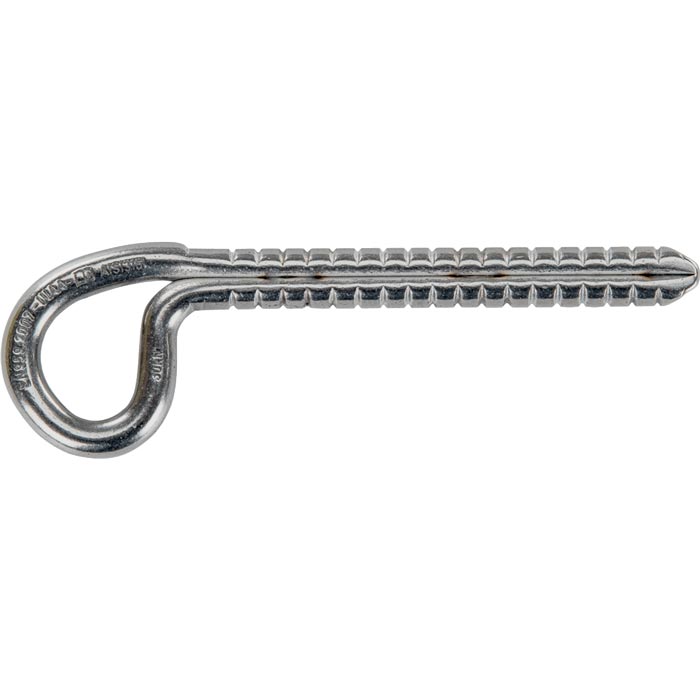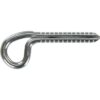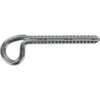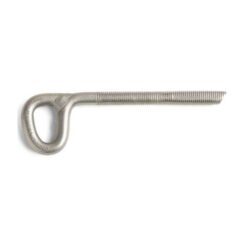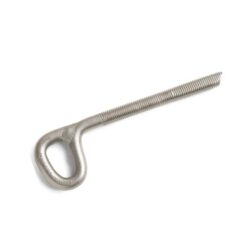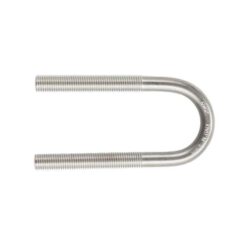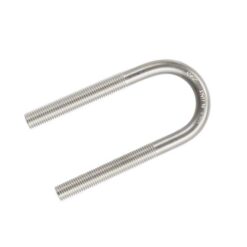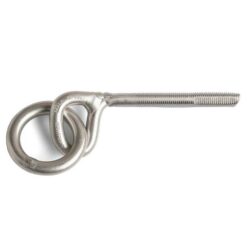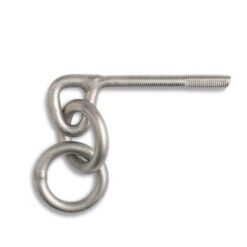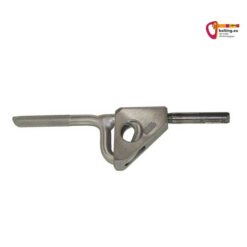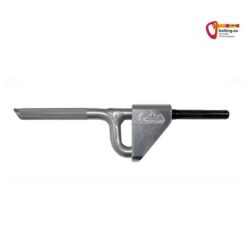Shop » bolting products » glue in bolts » glue in bolt Stainless steel
glue in bolt Stainless steel
€ 8,49 – € 10,90
incl. VAT zzgl. Versandkosten
High-quality glue in bolt without load-bearing weld seam with 30 kN breaking load.
Round eyelet for possible use as an abseiling point / anchor point.
Free shipping up to 2kg in 

Description
Our glue in bolt stainless steel is a high-quality product from Climbing Technology. The hook is made of highly corrosion-resistant AISI 316L (A4) stainless steel. It is also known as a “stainless steel composite hook”.
This hook has some great features. Firstly, its high steel quality. Secondly, it has the EN 959 standard. This means that it can be used by all climbing crag holders. For example, for climbing area rebolting. Thirdly, the glue in bolt stainless steel is available with two shaft lengths. On the one hand with 7.5cm. And the other with 10cm. This allows you to react perfectly to different rock qualities.
Fourthly, this glue in bolt has NO load-bearing weld seam. Fifthly, the stainless steel composite hook has a perfectly sized carabiner eye. It fits two carabiners as well as one carabiner and one rope.
In short. If you’re looking for a high-quality glue in bolt with EN 959 standard for public climbing areas, you’ve come to the right place!
Features glue in bolt Stainless steel
- Manufacturer: Climbing Technology
- Material: AISI 316L stainless steel
- Shaft lengths: 7cm or 10cm
- Weight: 100 grams or 122 grams
- Shank diameter: 12mm
- required drilling hole: 14mm
- Standards: EN 959
- Breaking loads: 30kN axial and radial
- Operating instructions
Stainless steel = AISI 316L
This glue in bolt stainless steel is made of high-quality AISI 316L steel. The German standard refers to this steel quality as A4 steel. This means that it has a high chromium content, which ensures the formation of a corrosion protection layer.
Not familiar with all this? Then read our article“Steel quality at expansion bolt and glue in bolt“. We explain all this in great detail there. You will then be able to judge the quality of this stainless steel composite hook much better!
No load-bearing weld seam!
This stainless steel composite hook has no load-bearing weld seam.
In other words, it is one of the strongest and safest on the market. This is because the 8 mm steel wire of this glue in bolt stainless steel is actually bent “twice”. It is fixed to the shaft with a mini welding spot. But only so that the two ends do not diverge.
By “pressing” the shaft, the final result is its 12mm diameter.
glue in bolt Stainless steel – Installation
As with all glue in bolt, installation is a complex process. Only those who work conscientiously and accurately will obtain reliable fixed points. But what does this mean in practice?
We explain this in detail in our article “Settingglue in bolt “.
A short version looks like this. Firstly, you have to drill deep enough. Secondly, clean the drilling hole extremely clean. Thirdly, attach the channel for the carabiner eyelet on the side of the rock. And fourthly, glue the stainless steel composite hook cleanly in place.
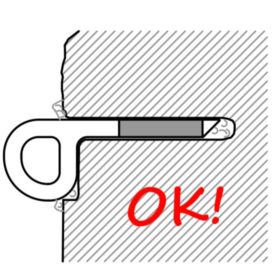
By the way, we recommend doing this only with injection mortar to do this.
Glass mortar cartridges are only suitable for individual fixed points or for very experienced developers.
Would you like to learn more about“Setting up climbing routes with glue in bolt “? Then attend one of our courses at the bolting.eu Academy! There you will learn how to use glue in bolt stainless steel correctly!
These glue in bolt consist of an austenitic steel with a chromium content (mass fraction) of at least 10.5%. This is why this steel is also referred to as “chromium steel” or “stainless steel”. Depending on the amount of chromium, these steels are divided into categories such as A2 steel or A4 steel. 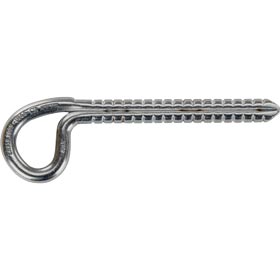
This type of hook is best installed with injection mortar. This requires a suitably sized hole and extremely clean hole cleaning. A channel must also be drilled for the hook eye on the side of the rock. Fill the hole with sufficient mortar and then insert the glue in bolt while turning. The excess adhesive is neatly spread around the hook eye. 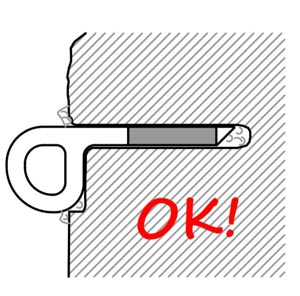
Anyone setting up a public climbing area should only use glue in bolt with the EN 959 – UIAA 123 standard!
As the market leader in the Alpine region, bolting.eu has the largest range. We offer a selection of around 40 different models glue in bolt models for all areas of application in alpinism, speleology, work at heights and for the hobby sector. 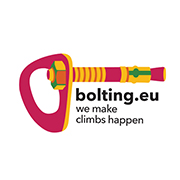
Additional information
| Weight | N/A |
|---|---|
| Dimensions | N/A |
| Marke | Climbing Technology |
| Stahlqualität | A4 steel / AISI 316(L) |
| Korrosionsbeständigkeit | Very high |
| Klebehaken Dimension | 12 x 100mm, 12 x 75mm |
| Einbohrmaterial Kategorie | glue in bolt |
| Einbohr Gewicht | heavy, normal |
